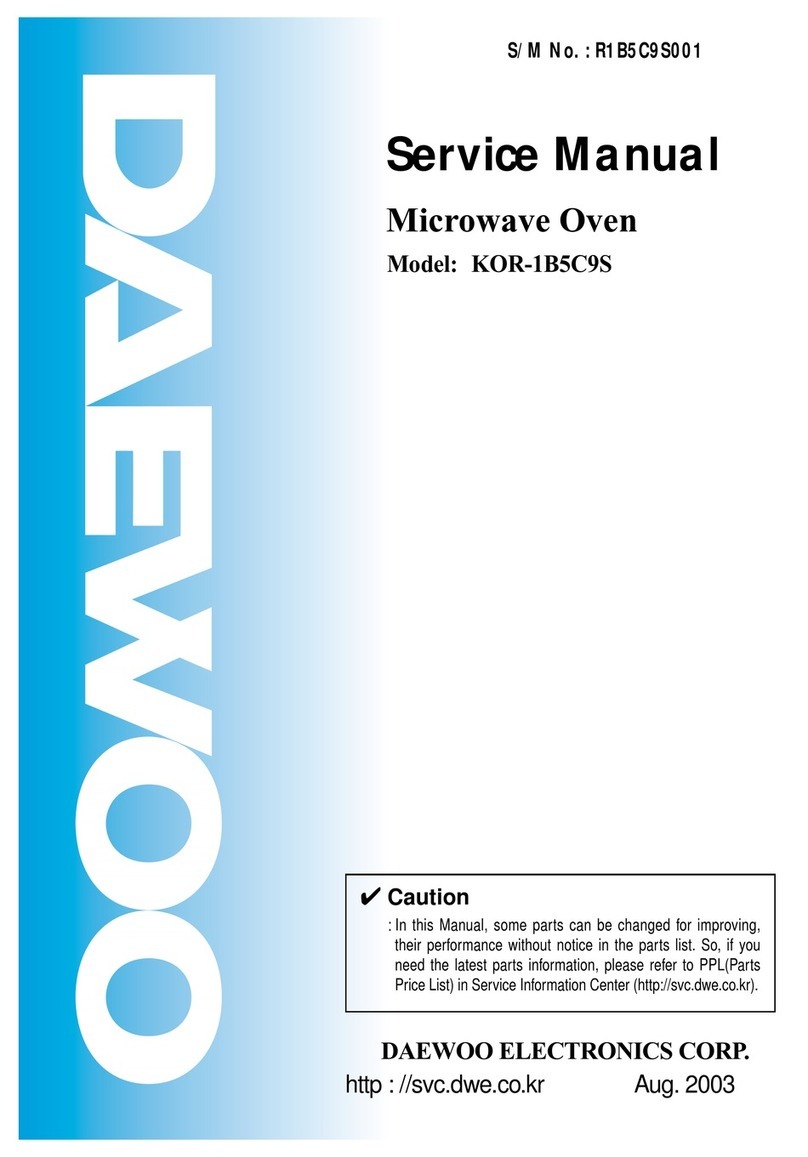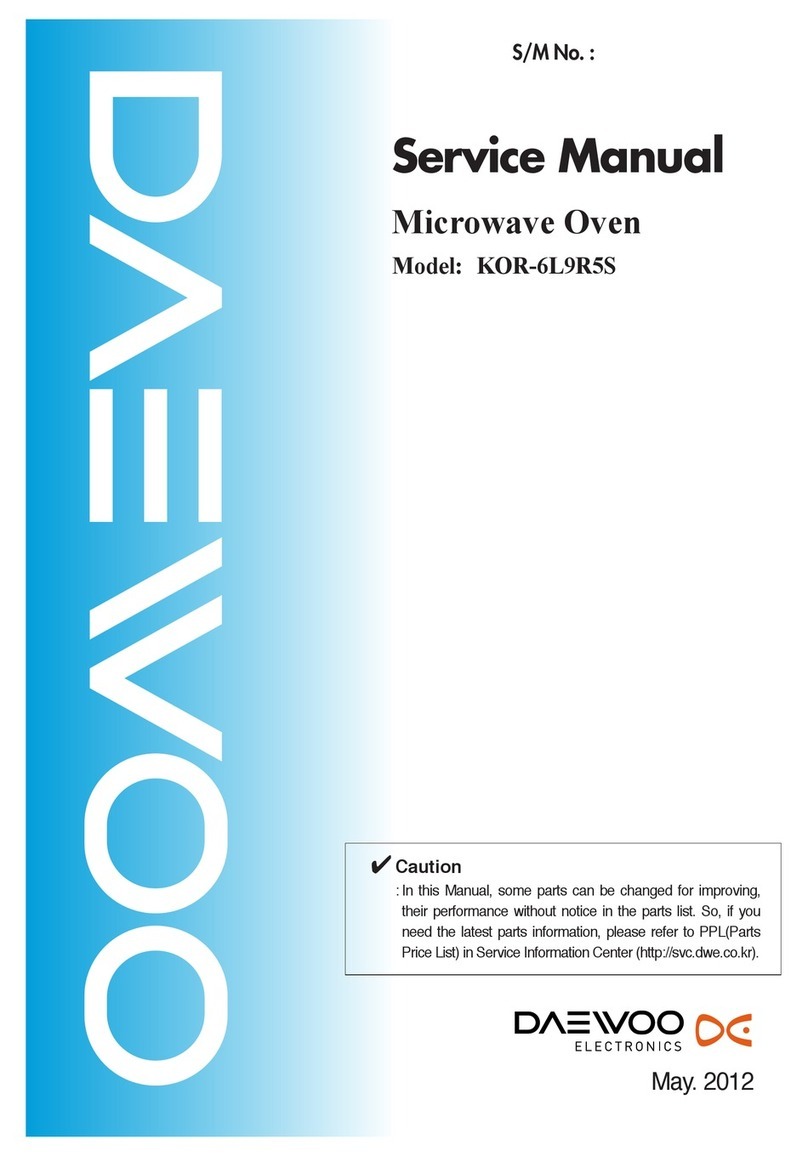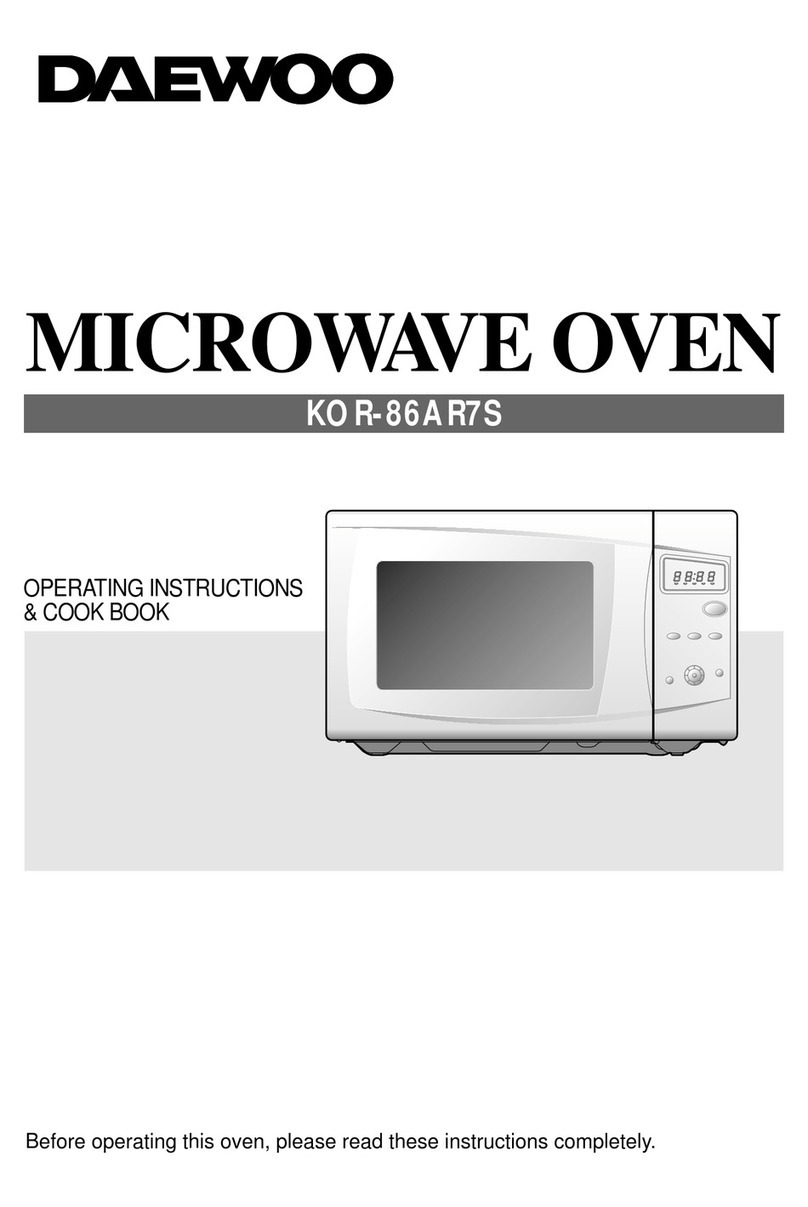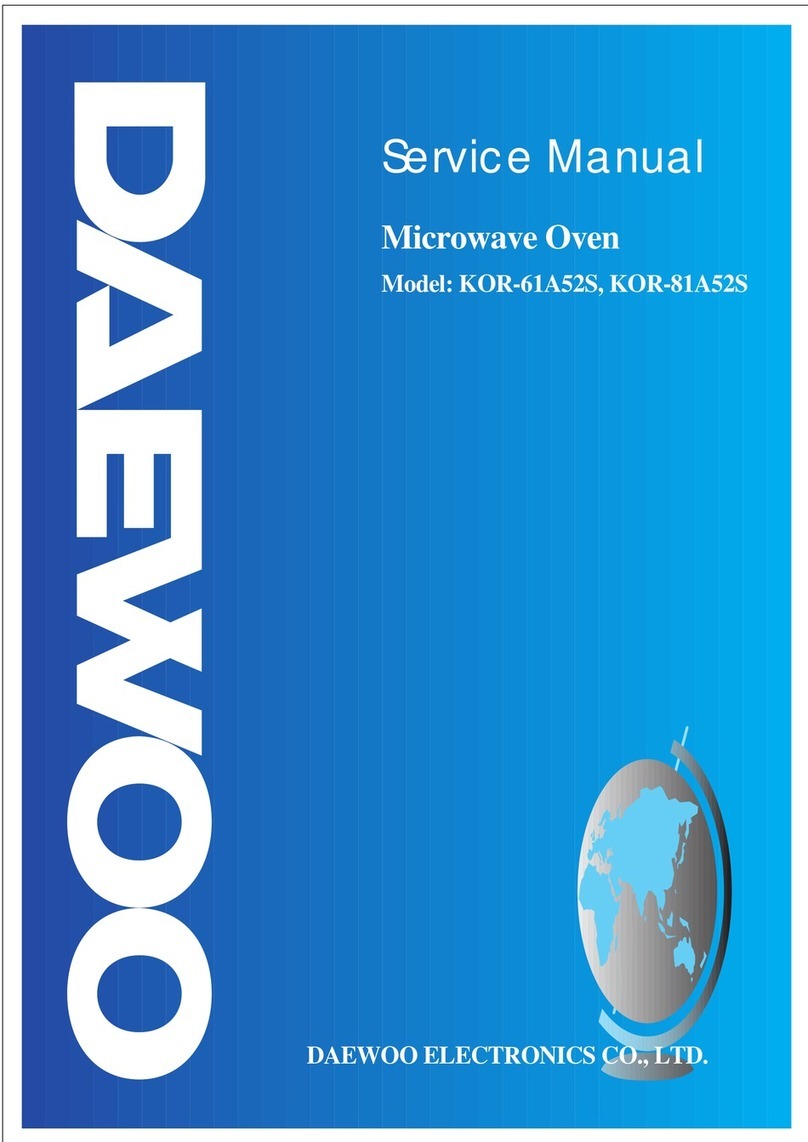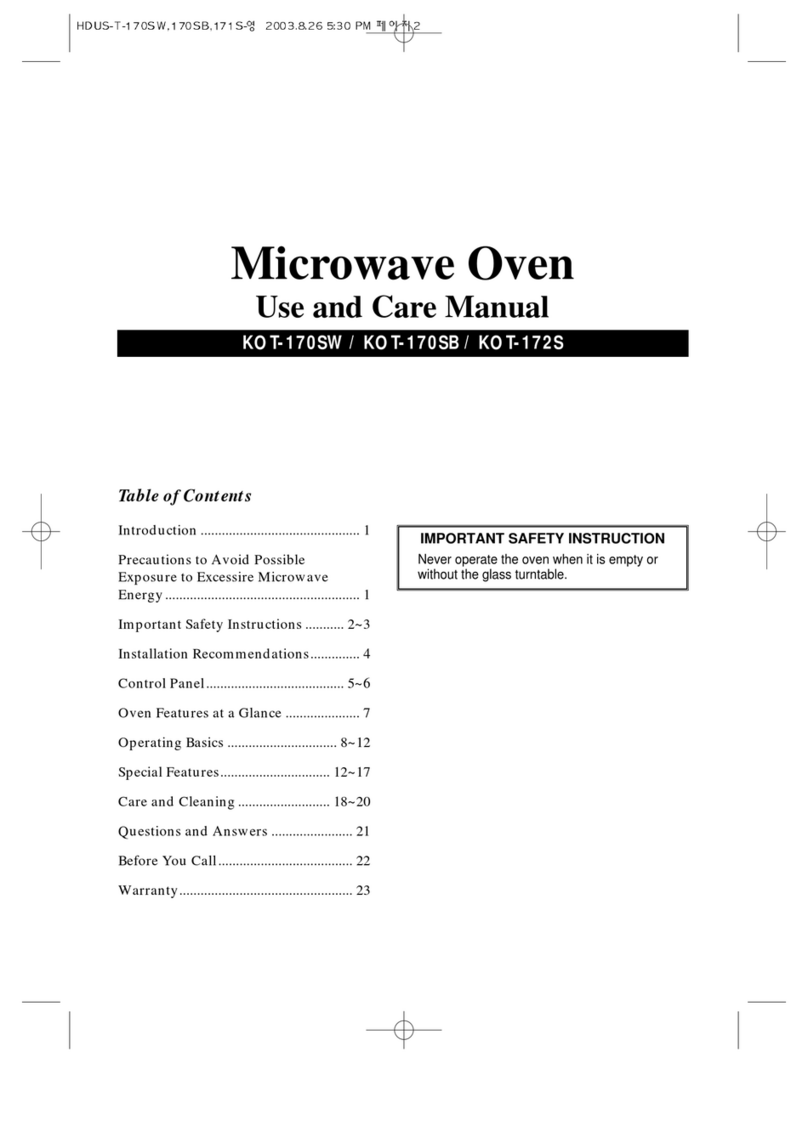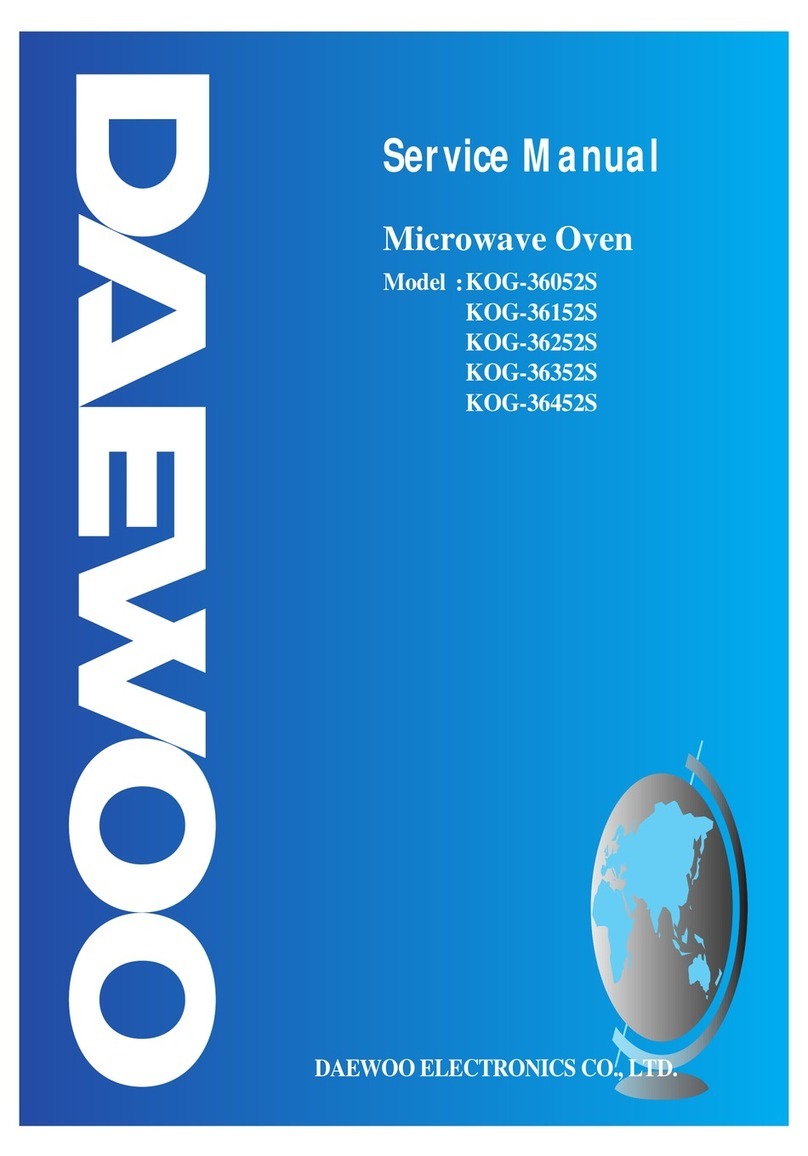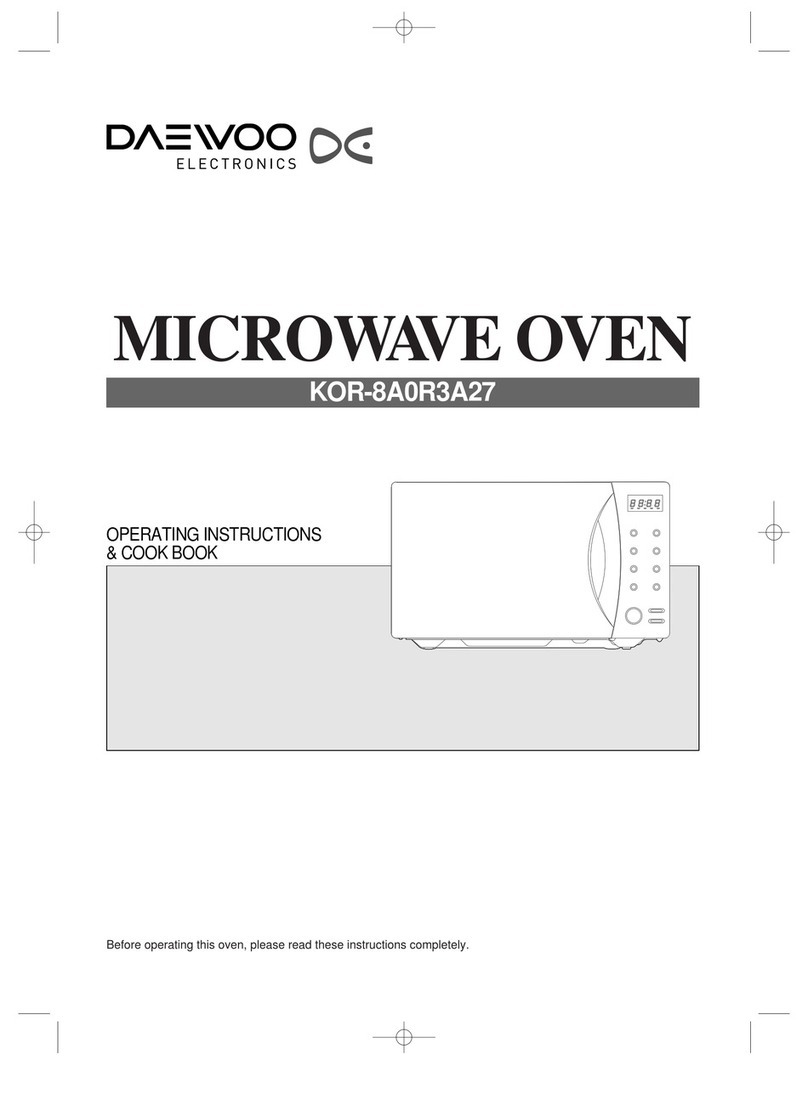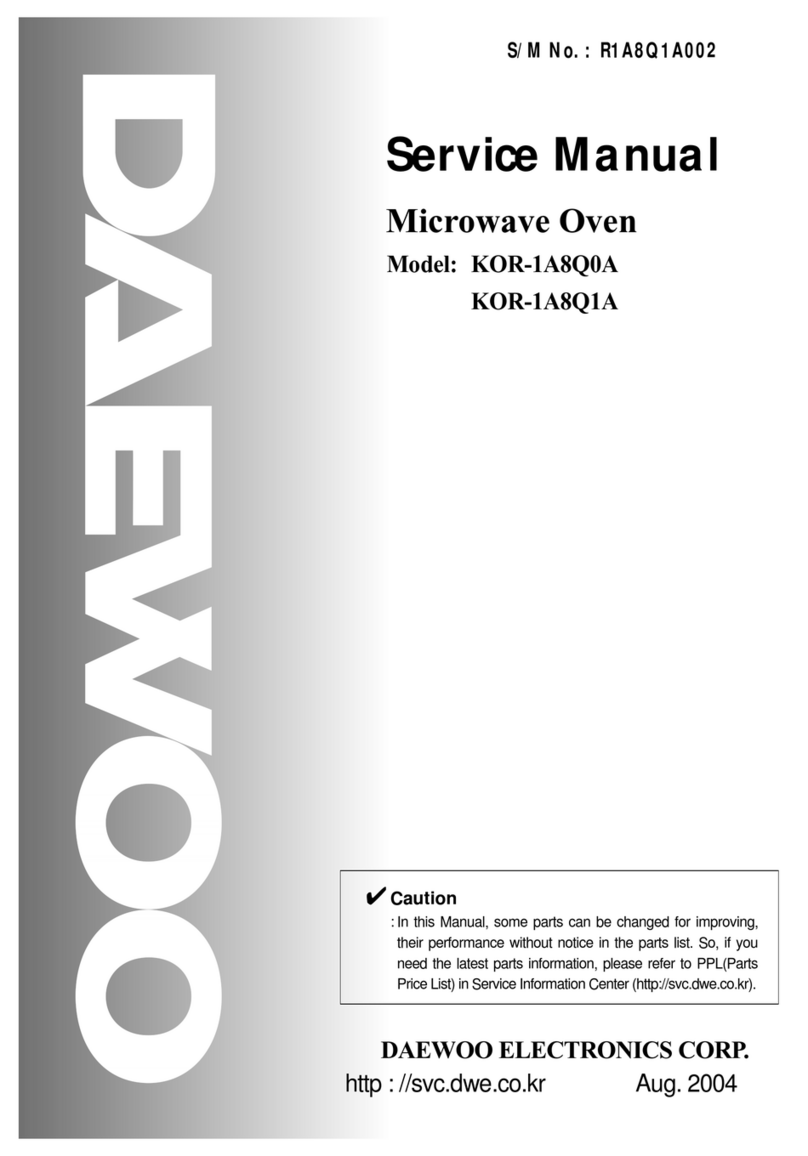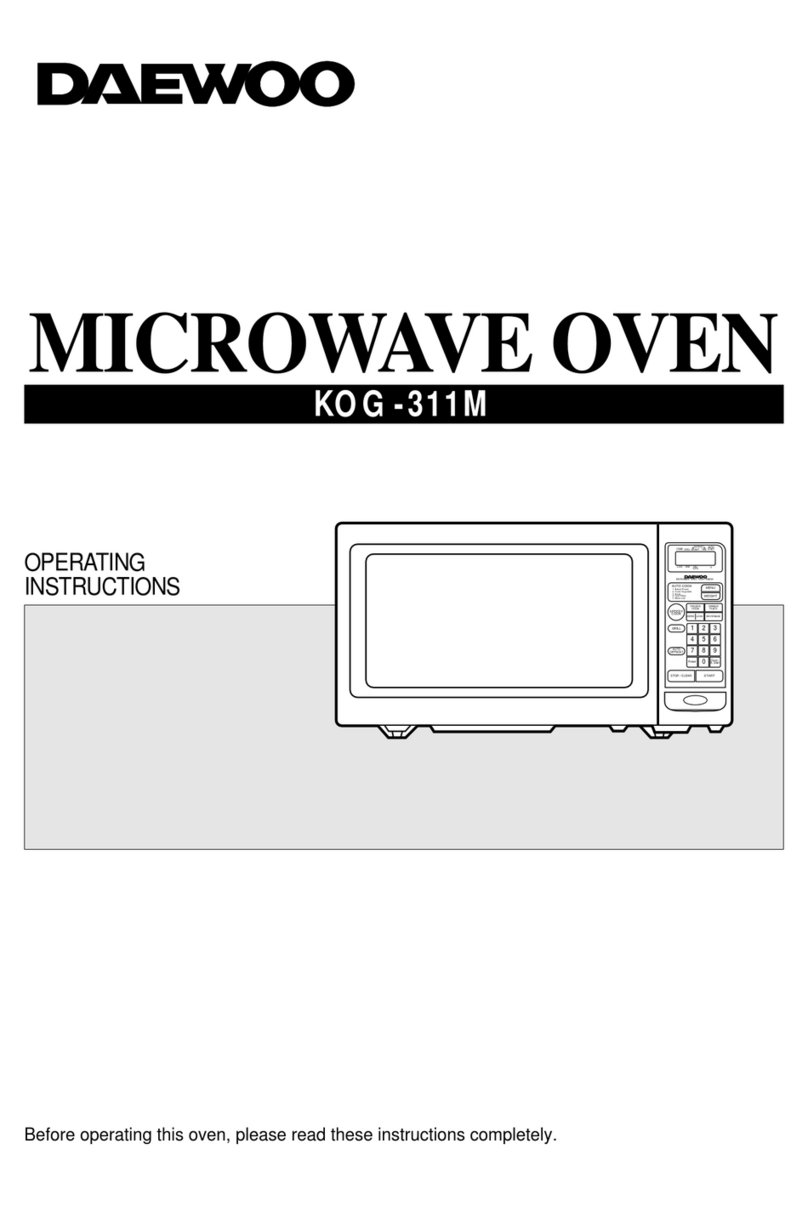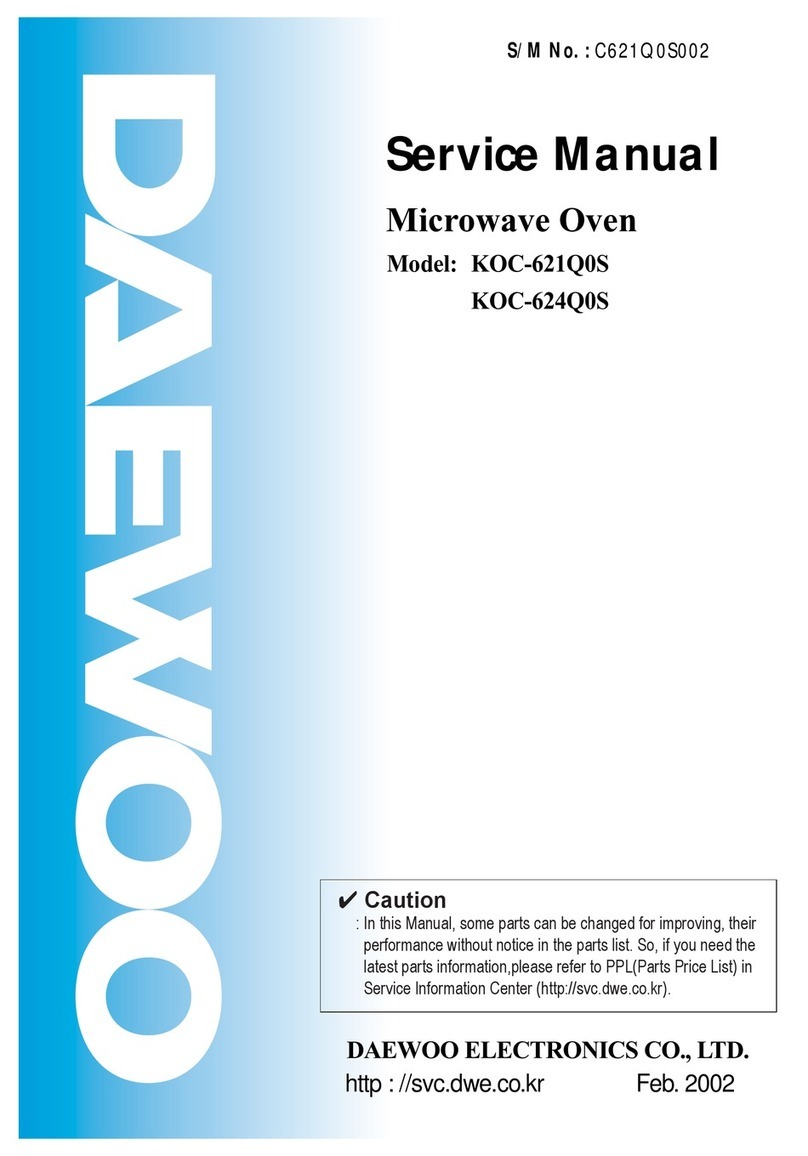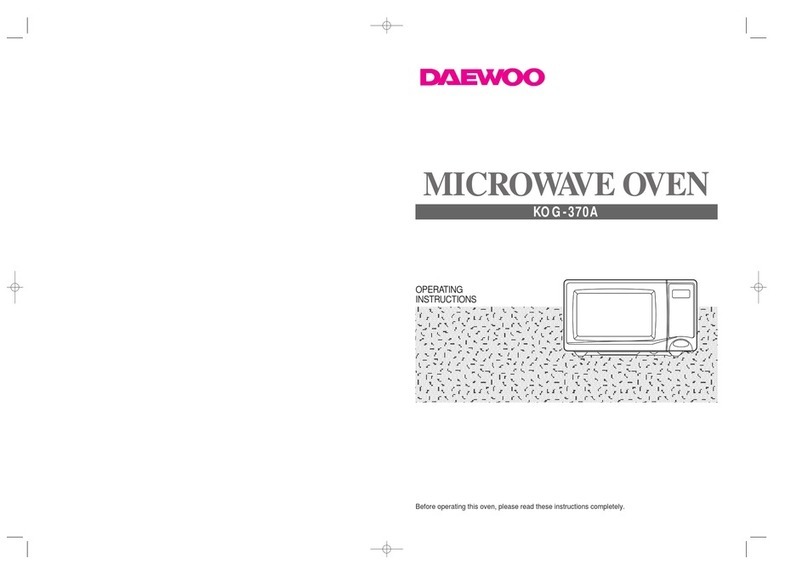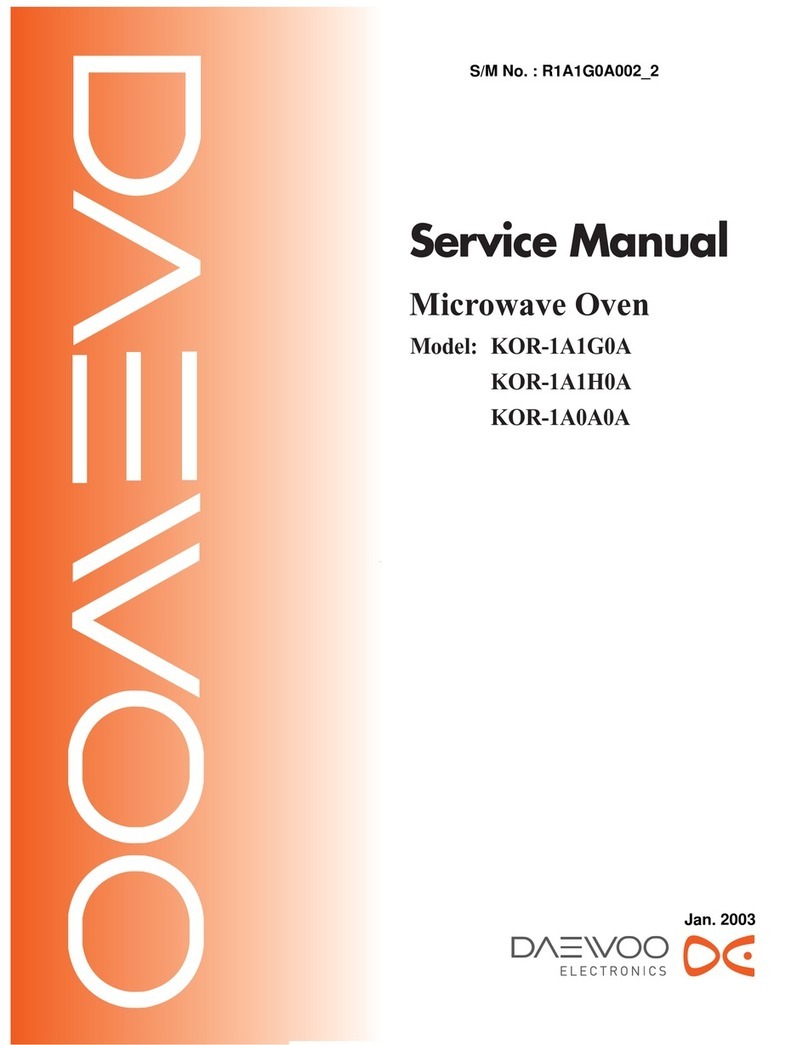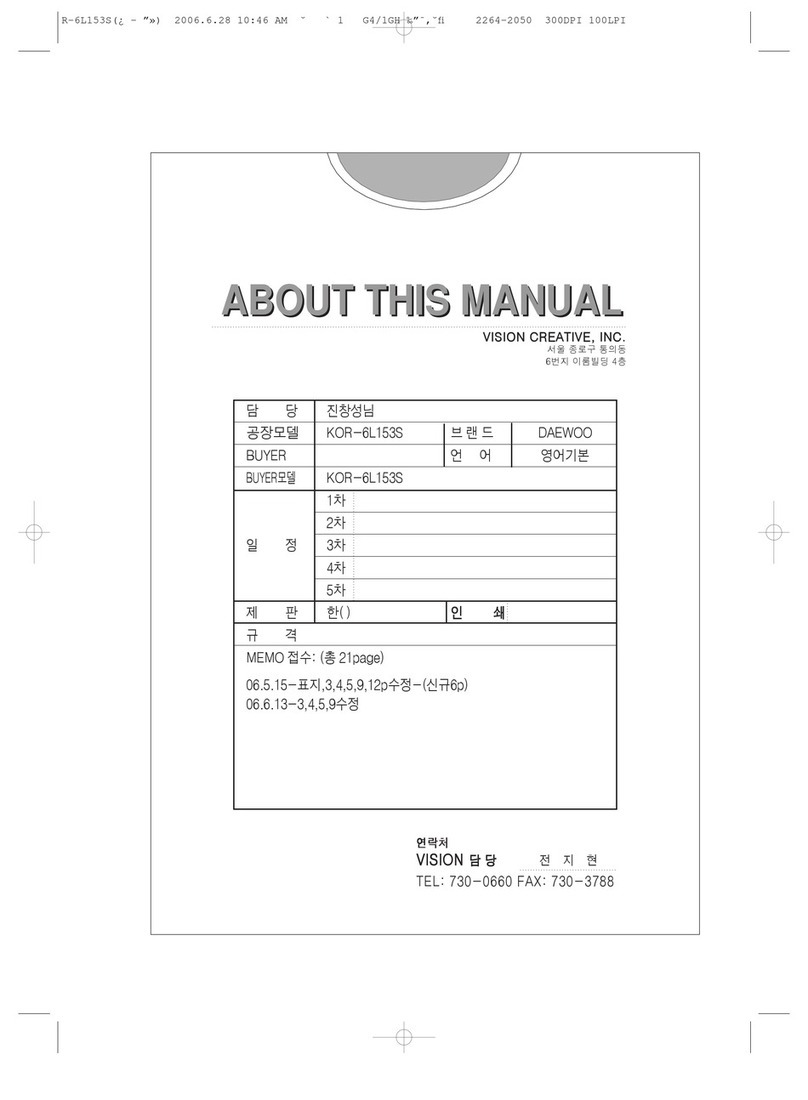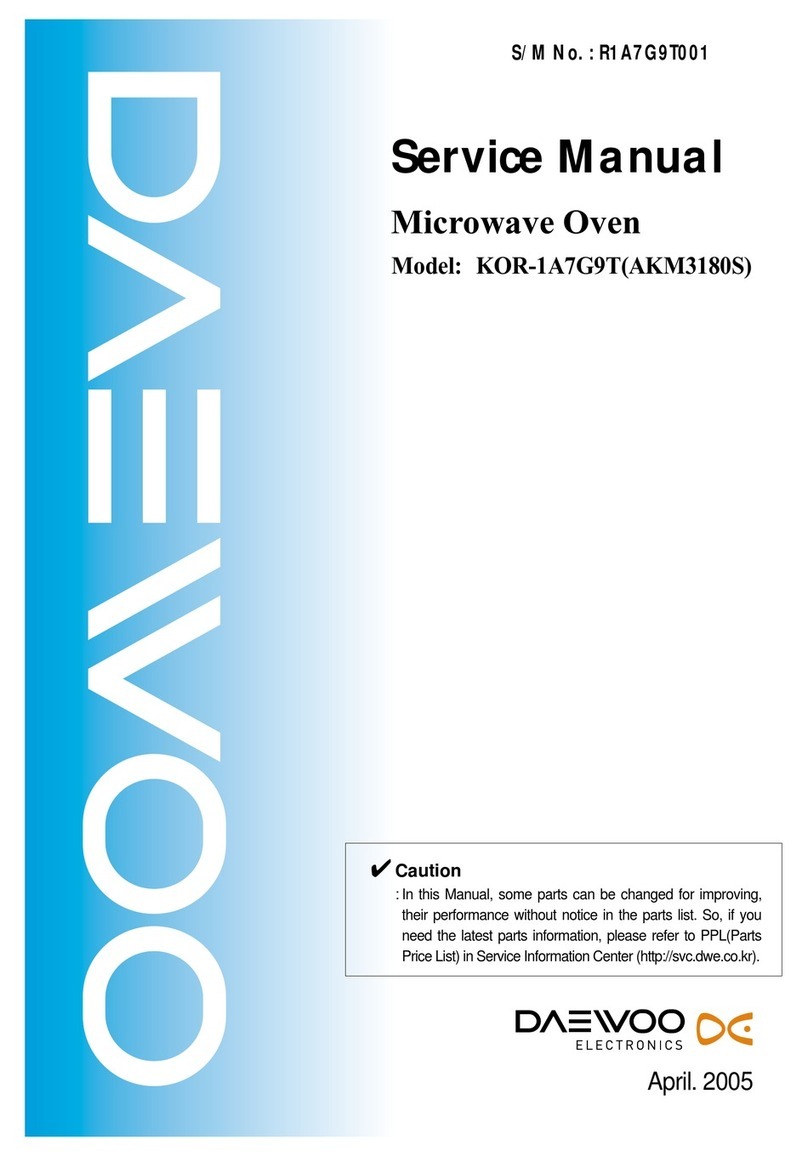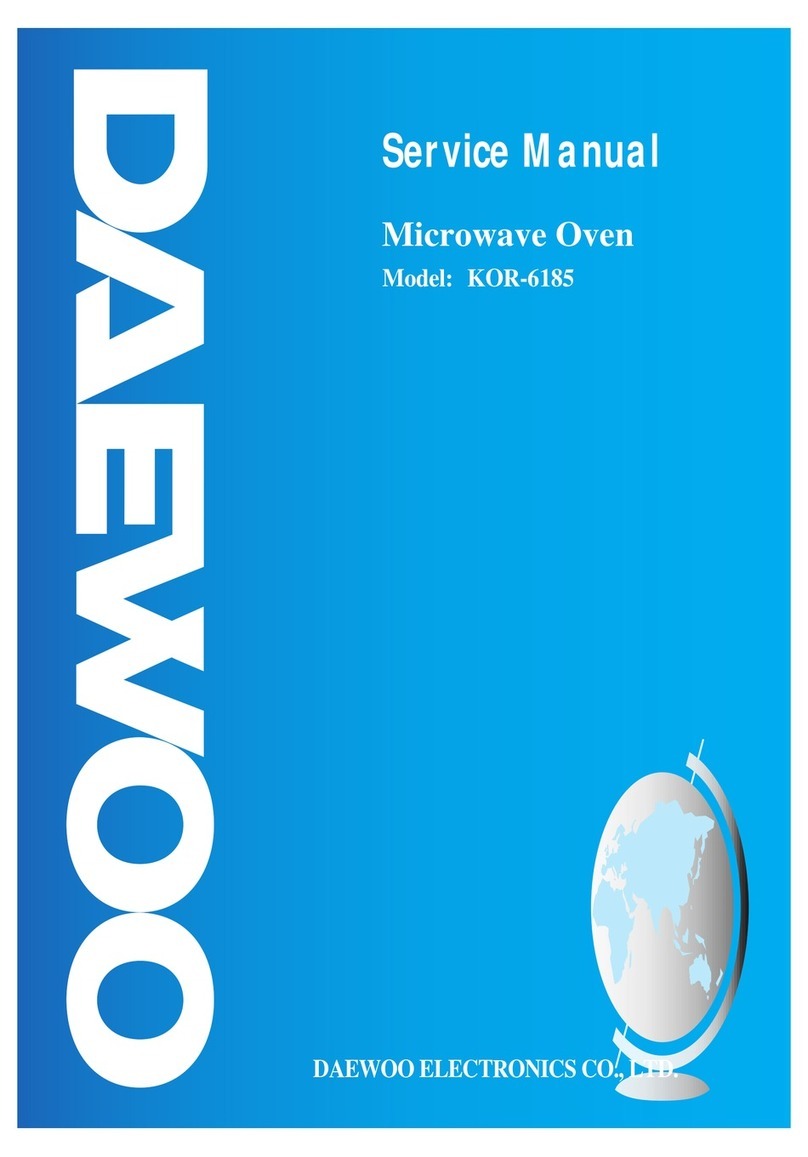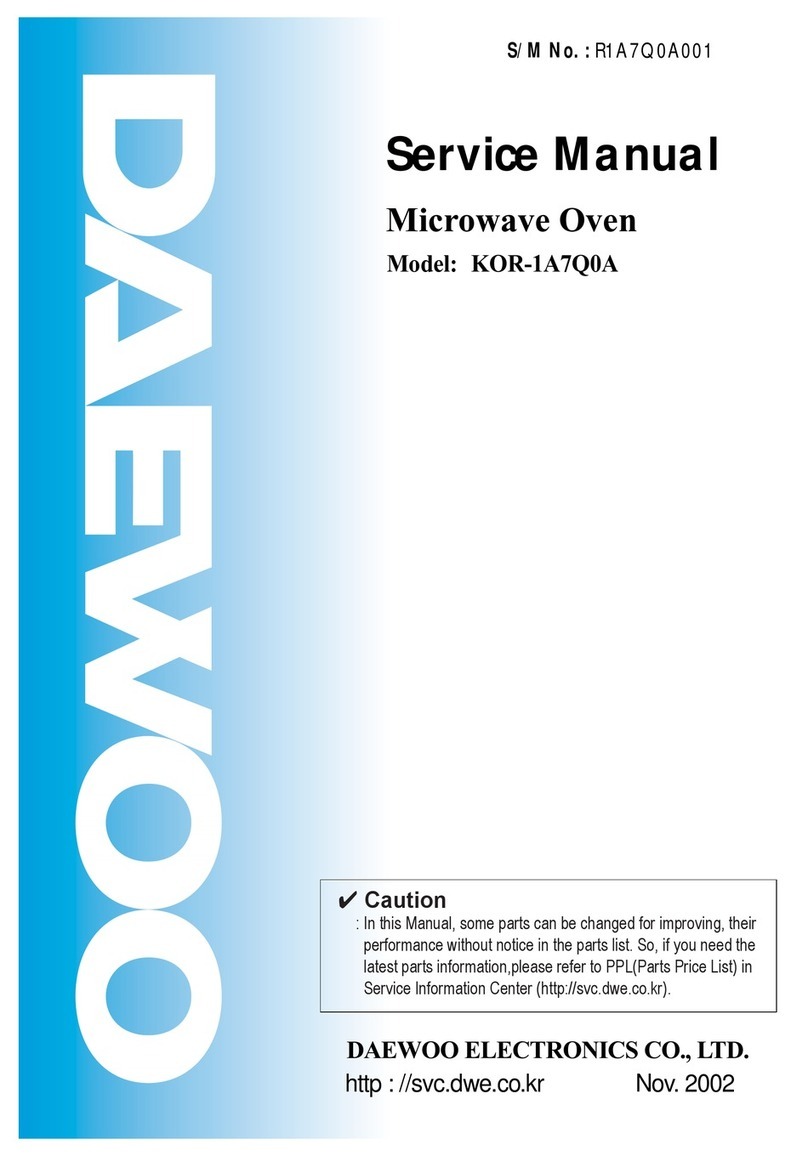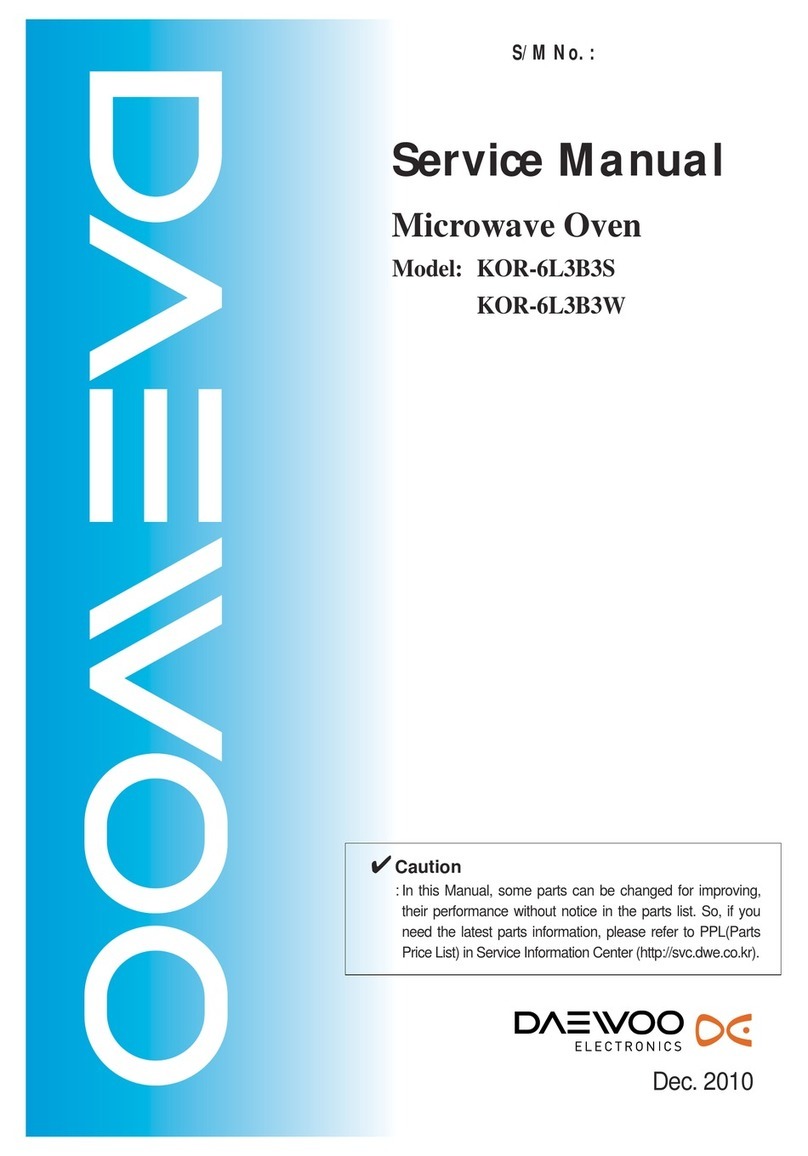3
IMPORTANT SAFETY INSTRUCTIONS
READ CAREFULLY AND KEEP FOR FUTURE REFERENCE
WARNING : To prevent fire, burns, electric shock and other warnings:
Listed below are, as with all appliances, certain rules to follow and safeguards to assure high
performance from this oven:
1. Do not use the oven for any reason other than food
preparation, such as for drying clothes, paper, or any
other nonfood items or for sterilizing purposes.
2. Do not use the oven when empty, this could damage the
oven.
3. Do not use the oven cavity for any type of storage, such
as papers, cookbook, cookware, etc.
4. Do not operate the oven without the glass tray in place. Be
sure it is properly sitting on the rotating base.
5. Make sure you remove caps or lids prior to cooking when
you cook food sealed in bottles.
6. Do not put foreign material between the oven surface and
door. It could result in excessive leakage of microwave
energy.
7. Do not use recycled paper products for cooking. They may
contain impurities which could cause sparks and/or fires
when used during cooking.
8. Do not pop popcorn unless popped in a microwave
approved popcorn popper or unless it's commercially
packaged and recommended especially for microwave
ovens. Microwave popped corn produces a lower yield
than conventional popping; there will be a number of
unpopped kernels. Do not use oil unless specified by the
manufacturer.
9. Do not cook any food surrounded by a membrane, such
as egg yolks, potatoes, chicken livers, etc., without first
piercing them several times with a fork.
10. Do not pop popcorn longer than the manufacturer's
directions. (popping time is generally below 3 minutes).
Longer cooking does not yield more popped corn, it can
cause scorchings and fire. Also, the cooking tray can
become too hot to handle or may break.
11. If smoke is observed, switch off or unplug the appliance
and keep the door closed in order to stifle any flames.
12. When heating food in plastic or paper containers, keep an
eye on the oven due to the possibility of ignition.
13. The contents of feeding bottles and baby food jars shall be
stirred or shaken and the temperature checked before
consumption, in order to avoid burns.
14. Always test the temperature of food or drink which has
been heated in a microwave oven before you give it to
somebody, especially to children or elderly people. This is
important because things which have been heated in a
microwave oven carry on getting hotter even though the
microwave oven cooking has stopped.
15. Eggs in their shell and whole hard-boiled eggs should not
be heated in microwave ovens since they may explode,
even after microwave heating has ended;
16. Keep the waveguide cover clean at all times. Wipe the
oven interior with a soft damp cloth after each use. If you
leave grease or fat anywhere in the cavity it may
overheat, smoke or even catch fire when next using the
oven.
17. Never heat oil or fat for deep frying as you cannot control
the temperature and doing so may lead to overheating
and fire.
18. Liquids, such as water, coffee, or tea are able to be
overheated beyond the boiling point without appearing to
be boiling due to surface tension of the liquid. Visible
bubbling or boiling when the container is removed from
the microwave oven is not always present. THIS COULD
RESULT IN VERY HOT LIQUIDS SUDDENLY BOILING
OVER WHEN A SPOON OR OTHER UTENSIL IS
INSERTED INTO THE LIQUID.
To reduce the risk of injury to persons:
a) Do not overheat the liquid.
b) Stir the liquid both before and halfway through heating
it
c) Do not use straight-sided containers with narrow necks.
d) After heating, allow the container to stand in the
microwave oven for a short time before removing the
container.
e) Use extreme care when inserting a spoon or other
utensil into the container.
19. Oven should be cleaned regularly and any food deposits
removed.
20. Failure to maintain the oven in a clean condition could
lead to deterioration of the surface that could adversely
affect the life of the appliance and possibly result in a
hazardous situation.
21. This appliance is not intended for use by
persons(including children) with reduced physical,
sensory or mental capabilities, or lack of experience and
knowledge, unless they have been given supervision or
instruction concerning use of the appliance by a person
responsible for their safety.
22. Children should be supervised to ensure that they do not
play with the appliance.
SAVE THESE INSTRUCTIONS
